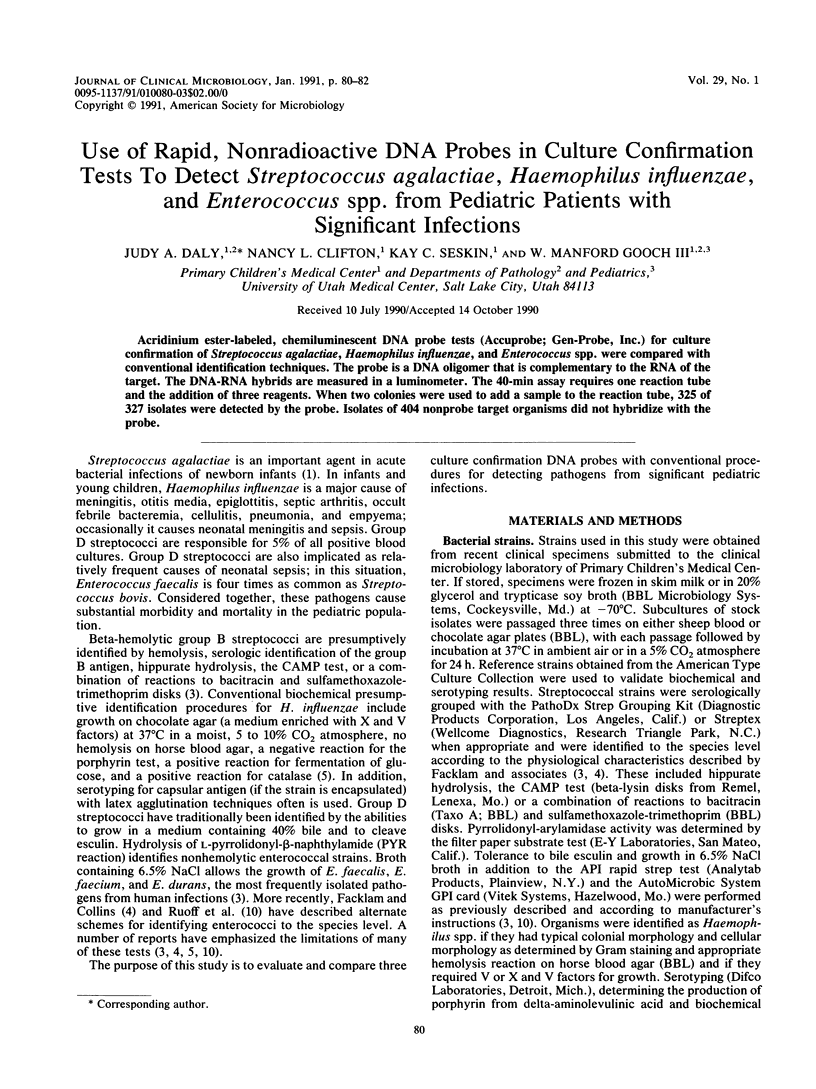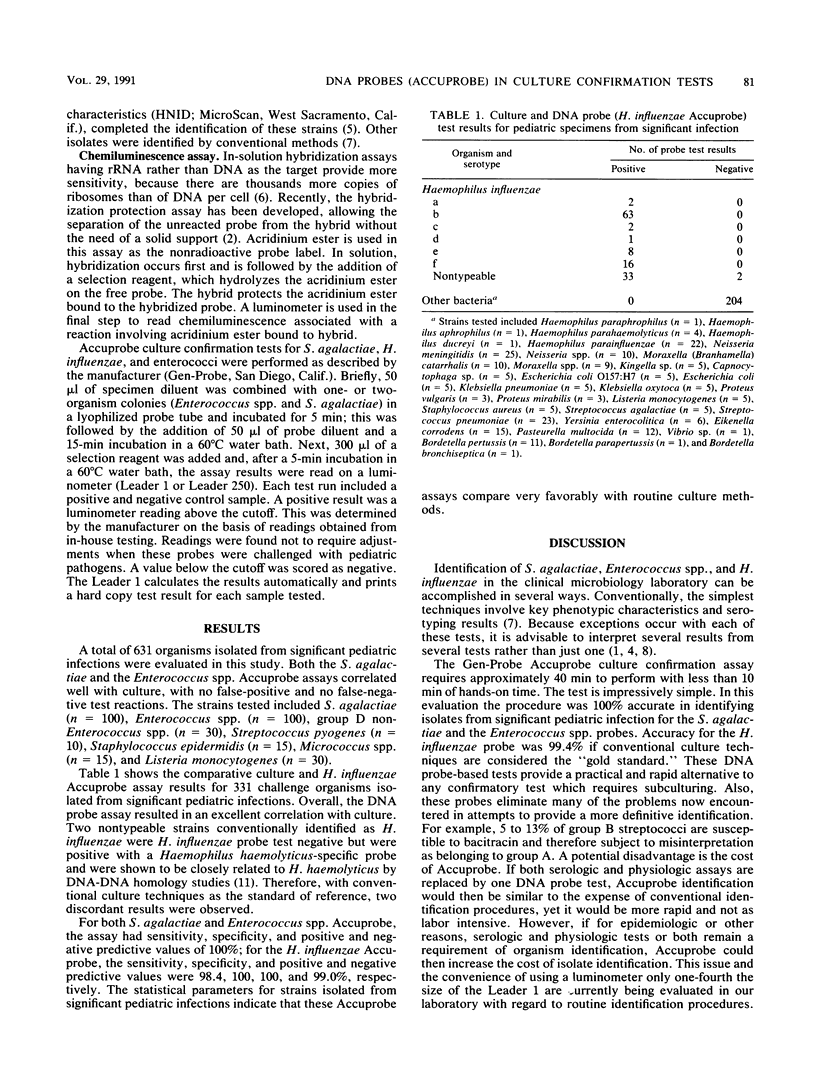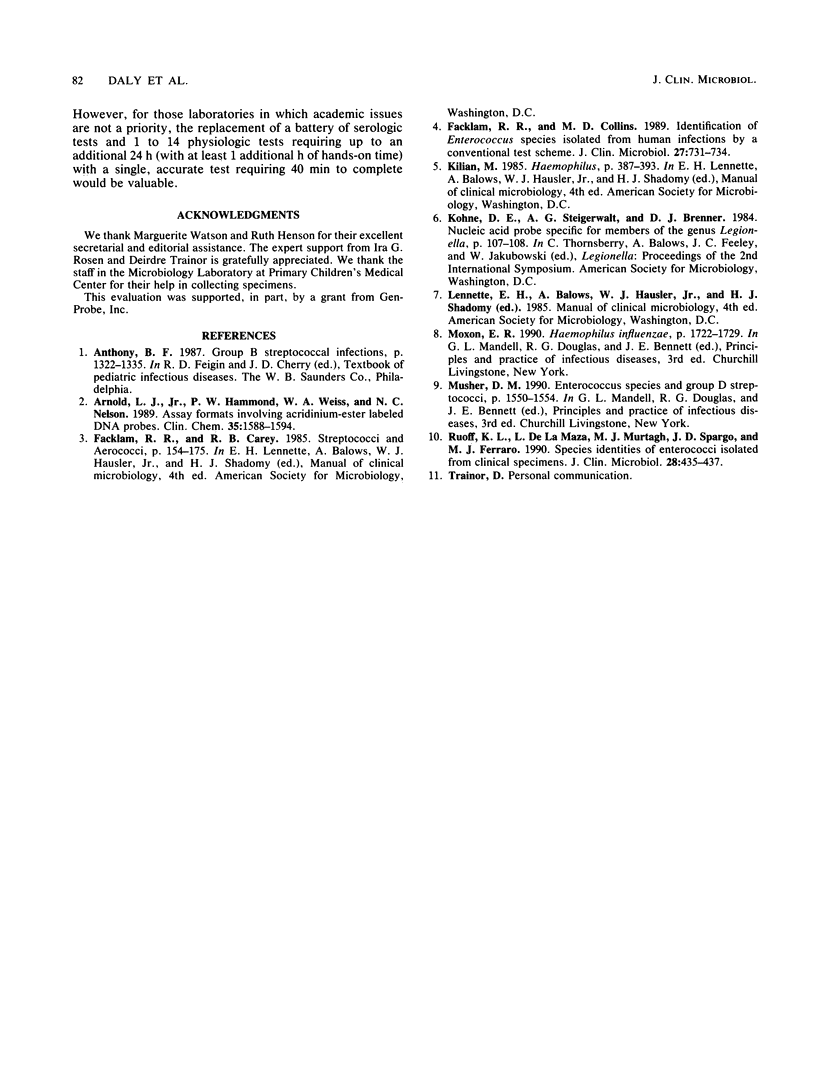Abstract
Acridinium ester-labeled, chemiluminescent DNA probe tests (Accuprobe; Gen-Probe, Inc.) for culture confirmation of Streptococcus agalactiae, Haemophilus influenzae, and Enterococcus spp. were compared with conventional identification techniques. The probe is a DNA oligomer that is a complementary to the RNA of the target. The DNA-RNA hybrids are measured in a luminometer. The 40-min assay requires one reaction tube and the addition of three reagents. When two colonies were used to add a sample of the reaction tube, 325 of 327 isolates were detected by the probe. Isolates of 404 nonprobe target organisms did not hybridize with the probe.
Full text
PDF


Selected References
These references are in PubMed. This may not be the complete list of references from this article.
- Arnold L. J., Jr, Hammond P. W., Wiese W. A., Nelson N. C. Assay formats involving acridinium-ester-labeled DNA probes. Clin Chem. 1989 Aug;35(8):1588–1594. [PubMed] [Google Scholar]
- Facklam R. R., Collins M. D. Identification of Enterococcus species isolated from human infections by a conventional test scheme. J Clin Microbiol. 1989 Apr;27(4):731–734. doi: 10.1128/jcm.27.4.731-734.1989. [DOI] [PMC free article] [PubMed] [Google Scholar]
- Ruoff K. L., de la Maza L., Murtagh M. J., Spargo J. D., Ferraro M. J. Species identities of enterococci isolated from clinical specimens. J Clin Microbiol. 1990 Mar;28(3):435–437. doi: 10.1128/jcm.28.3.435-437.1990. [DOI] [PMC free article] [PubMed] [Google Scholar]


